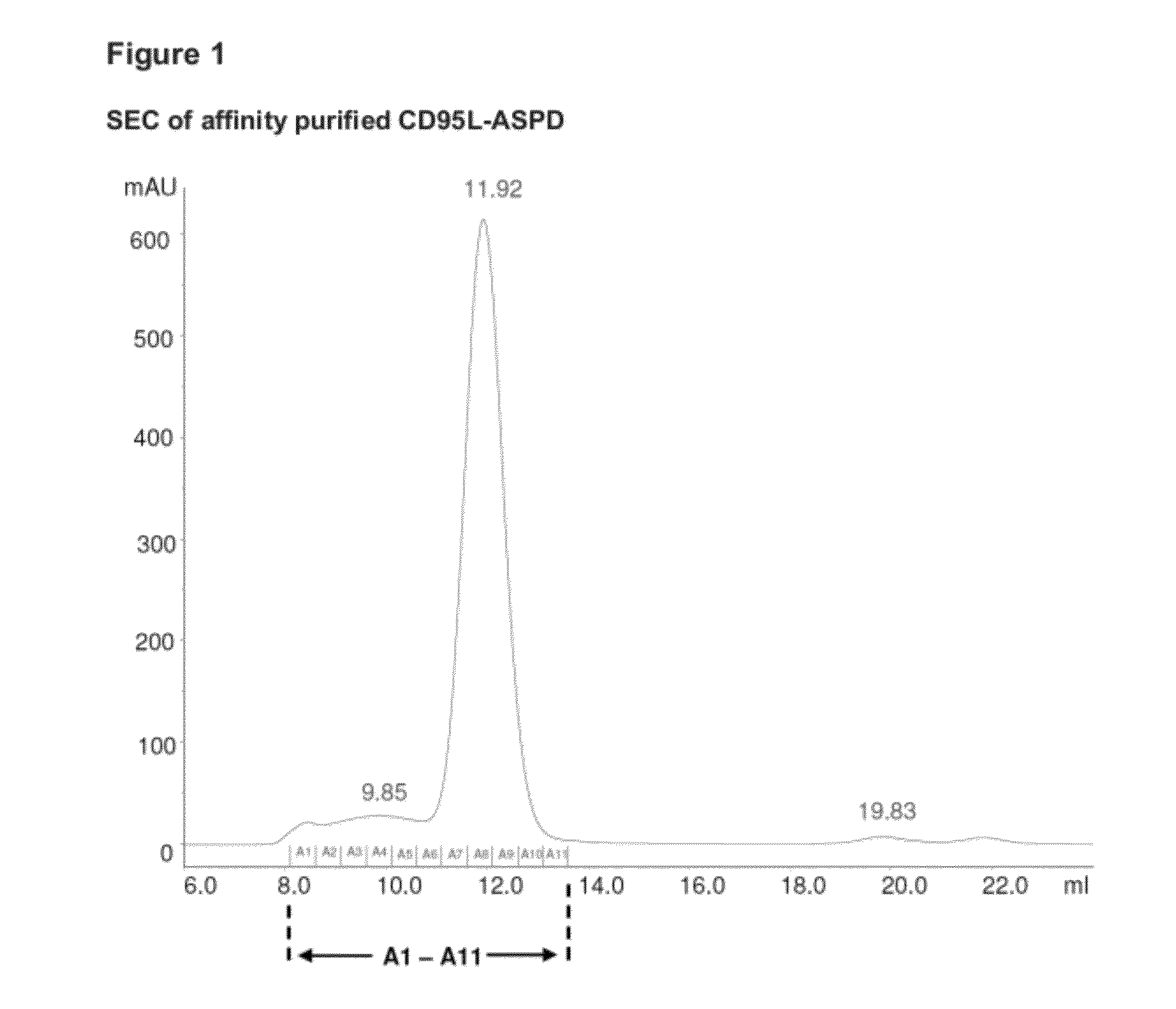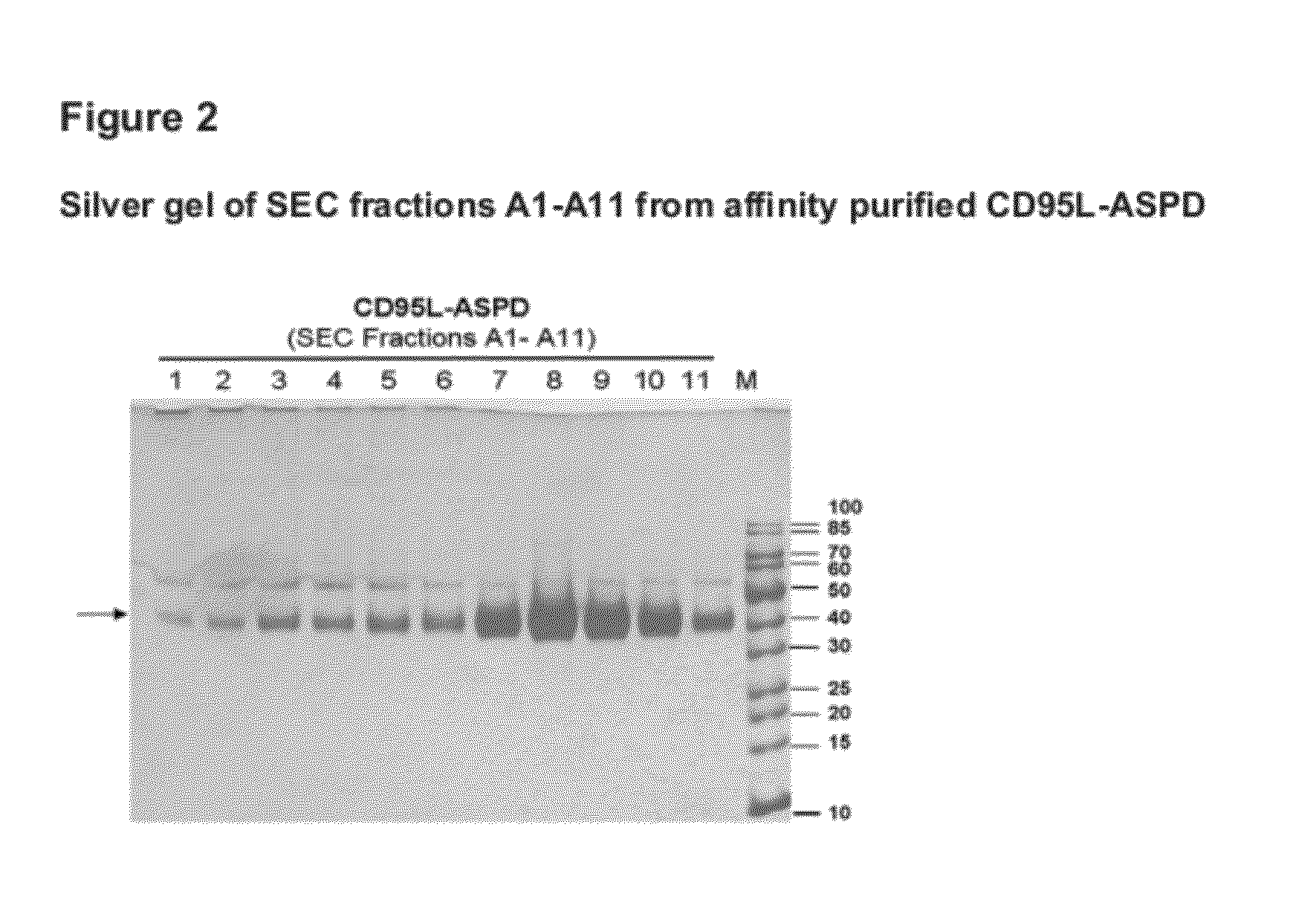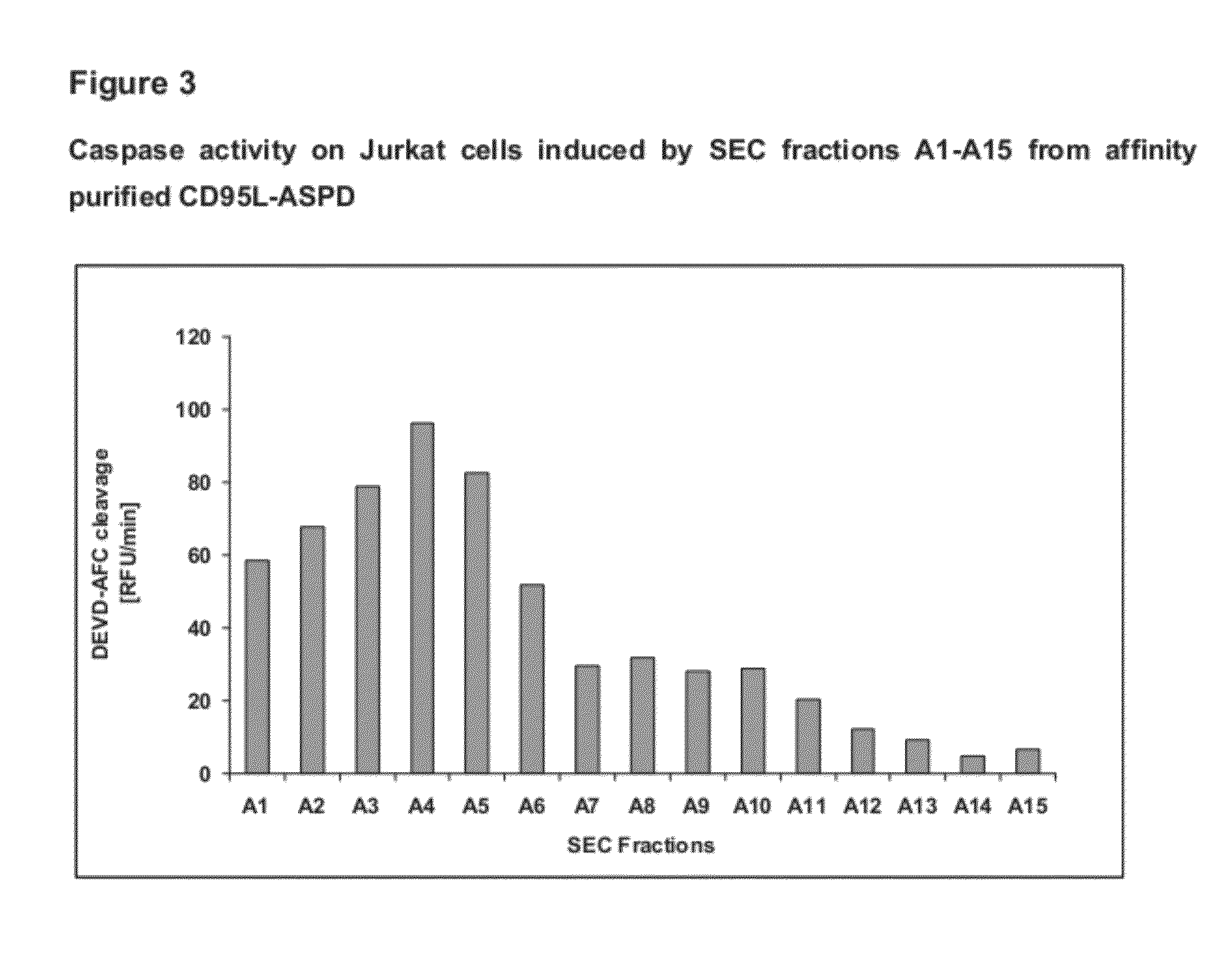Fusion proteins forming trimers
a technology of fusion proteins and trimers, which is applied in the field of fusion proteins forming trimers, can solve the problems of difficult to determine the optimal number of hepta-d-repeats in the coiled-coil zipper motif, the orientation of the polypeptide chain to each other, and the large molecular weight of the trimerization domain
- Summary
- Abstract
- Description
- Claims
- Application Information
AI Technical Summary
Problems solved by technology
Method used
Image
Examples
examples
1.1 Construction of TNF-SF-Proteins Stabilised by a C-Terminal Positioned Collectin Derived Trimerization Domain
[0166]The trimerization motifs (Tables 2. and 3) derived from human Collectin-11 (Col11), the “coiled coil” of Collectin-11 (CC11), human pulmonary surfactant protein-D (SP-D), the “coiled coil” of SP-D (CCSPD) were fused C-terminally to the human receptor binding domain (RBD) of CD95L (“CD95L-RBD”; Glu142-Leu281), human TRAIL-RBD (Gln120-Gly281), human LIGHT-RBD (Glu91-Val240) and human APRIL-RBD (Lys113-Leu250), respectively.
TABLE 2List of the used regions from wild type (wt) sequences for theconstruction of trimerizing motifs.Amino acids of the unprocessedTrimerizationwt sequences used for motifmotifconstructionSwiss-Prot entrySPD220-375P35247SPD_F335A220-375; Phe355 -> Ala355P35247SPD_F335D220-375; Phe355 -> Asp355P35247CCSPD220-257P35247Col11117-271Q9BWP8CC11116-151Q9BWP8
TABLE 3Explanation of C-terminal trimerization motifs used to generatestable TNFSF fusion proteins...
example 3
Generation of a Fusion Protein with a Single Chain Antibody as Effector Polypeptide
[0231]The amino acid sequences of examples for single chain (sc) Fv-SPD fusion proteins are shown below (SEQ ID 52, 53)
Sp-sc006-ASPDTotal amino acid number: 449 SEQ ID 521METDTLLLWV LLLWVPAGNG EVQLVESGGG LVKPGGSLRL SCAASGFTFN TNAMNWVRQA61PGKGLEWVAR IRSKSNNYAT YYADSVKDRF TLSRDDSKNT LYLQMNSLKT EDTAVYYCTR121DRGWGAMDYW GQGTTVTVSS GGGGSGGGGS GGGTGDIQMT QSPSSLSASV GDRVTITCSA181SQDINNYLNW YQQKPGKAPK LLIYYTSSLH SGVPSRFSGS GSGTDFTLTI SSLQPEDFAT241YYCQQFSNLP WTFGGGTKLE IKRTGSSGSS GSSGSGLPDV ASLRQQVEAL QGQVQHLQAA301FSQYKKVELF PNGQSVGEKI FKTAGFVKPF TEAQLLCTQA GGQLASPRSA AENAALQQLV361VAKNEAAFLS MTDSKTEGKF TYPTGESLVY SNWAPGEPND DGGSEDCVEI FTNGKWNDRA421CGEKRLVVCE FGGSPSSSSS SAWSHPQFEK 1-20: Signal secretion peptide (underlined) 21-140: Variable domain heavy chain141-155: Linker element156-264: Variable domain light chain265-276: A-Linker277-431: SPD-motiv (neck + CRD)432-441: Linker element442-450: Strep-tag II (W...
PUM
| Property | Measurement | Unit |
|---|---|---|
| Length | aaaaa | aaaaa |
Abstract
Description
Claims
Application Information
 Login to View More
Login to View More - R&D
- Intellectual Property
- Life Sciences
- Materials
- Tech Scout
- Unparalleled Data Quality
- Higher Quality Content
- 60% Fewer Hallucinations
Browse by: Latest US Patents, China's latest patents, Technical Efficacy Thesaurus, Application Domain, Technology Topic, Popular Technical Reports.
© 2025 PatSnap. All rights reserved.Legal|Privacy policy|Modern Slavery Act Transparency Statement|Sitemap|About US| Contact US: help@patsnap.com



